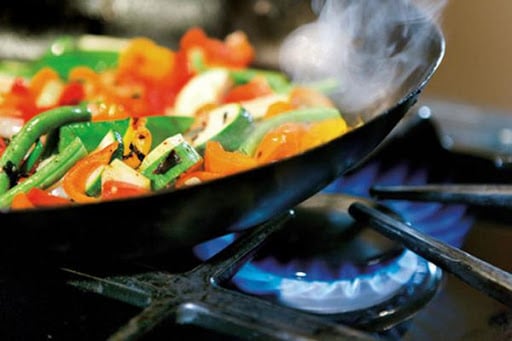One of the most frequent plumbing service requests we get in the Service Department at Lunt Marymor Plumbing Company is the request to alter, or add a new gas line in your home. Whether it’s time to bring the laundry up from the basement, upgrade to a tankless hot water heater, add a decorative log in the fireplace, or convert the cooktop from electric to gas, there are many reasons to think about altering the gas system in your home.
When budgeting to take on a project of this type, along with choosing and considering the location for the new appliance, it’s necessary to think about a few Plumbing 101 issues that may be required any time a gas system is altered in any way. The basic three issues are: safety, sizing and routing.
Safety first. The rules concerning gas piping in the Plumbing Code are intended to make natural and propane gas safe for domestic use. The other plumbing systems in your house, like water supply and drainage, have their issues, too, but handling gas improperly can present life-threatening safety hazards. Gas is flammable and once combusted it produces carbon monoxide as a dangerous by-product which must be safely vented to the exterior. In earthquake country, if a gas line ruptures in a big shake it’s absolutely important to shut the gas-flow off immediately in order to limit the chances of a fire or explosive hazard. A good time to ask your Plumber about an earthquake automatic gas shut-off valve to protect your home is any time you are planning to alter your gas system.
Pipe sizing: To properly size the branch gas pipe that will connect to your new appliance, your Plumber will consider three things: What is the gas consumption requirement, measured in British Thermal Units (BTUs) of the new appliance, what is the distance of the appliance from the gas meter (as measured along the length of the supply pipe), and what other gas consuming appliances are connected to the supply pipe along the route to the new location?
The Plumbing Code is written to insure that all of your gas appliances will have adequate gas supply under conditions of Peak Demand, those times when all of the appliances may be operating at the same time. We don’t want an appliance to get starved for gas; we don’t want the burner on the cooktop to flutter when the furnace comes on, or the hot water pilot to fail when all the burners on the range are cooking at high capacity. There is a straight forward set of calculations and tables in the Plumbing Code that assist your Plumber in choosing the correct pipe diameter and location to connect to the existing gas system to insure the adequate supply for all of your appliances. These considerations may explain why the Plumber can’t simply connect the new dryer to the existing hot water heater gas supply in the utility room where both are to be located. That ½” gas line at the water heater may not be large enough to handle the added demand from the dryer.
Pipe Routing: Once your Plumber has calculated the consumption requirements and pipe size, she can determine the best place to attach the new branch line to the existing gas piping. There is often more than one possibility. The best choice will consider the ease of physical access to the existing pipe, and the least intrusive route to get the pipe from its point of connection to the system to the new appliance location.
The most important tool in your Plumber’s took kit will be their knowledge of the Plumbing Code and experience in evaluating, designing, and installing plumbing alterations. Your Plumber has accumulated years of training prior to receiving their State License. He will obtain the required Plumbing Permit from the local authority and on inspection day perform a gas pressure test in the presence of the Plumbing Inspector to demonstrate a proper and safe installation.
Now you’re cookin’ with gas……..what’s for dinner?


